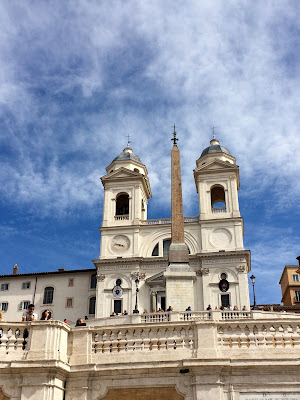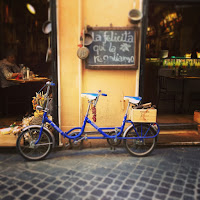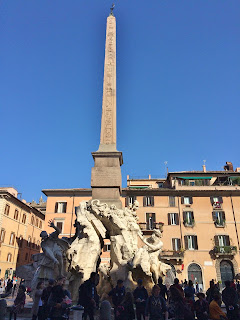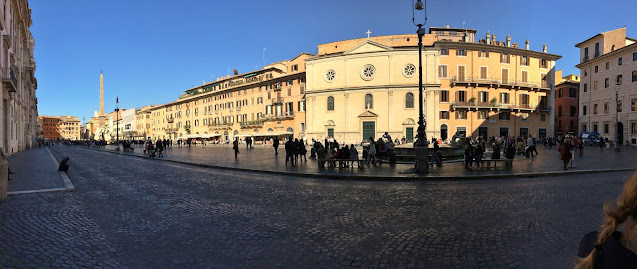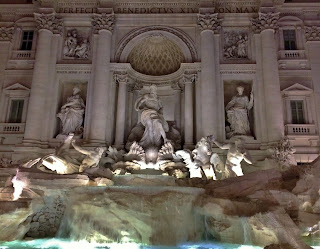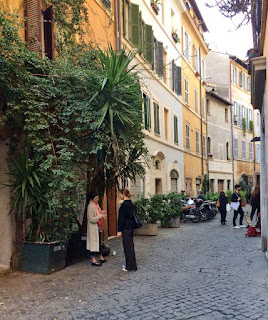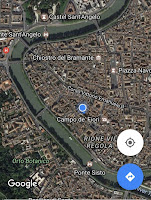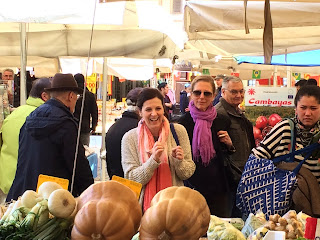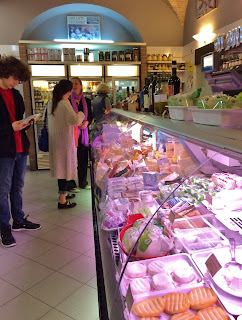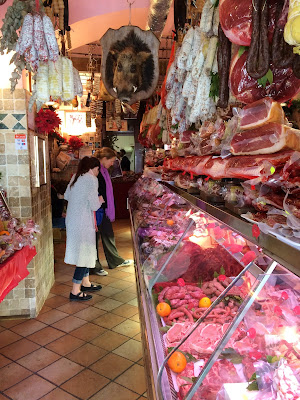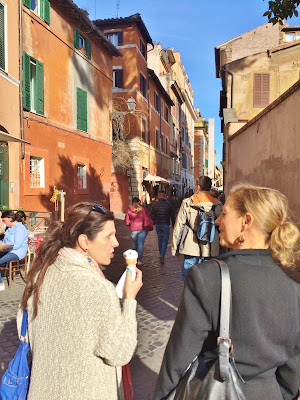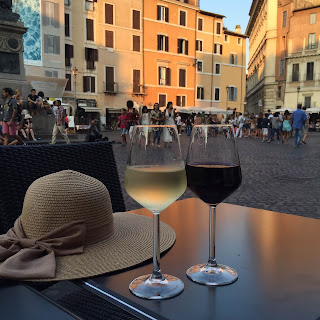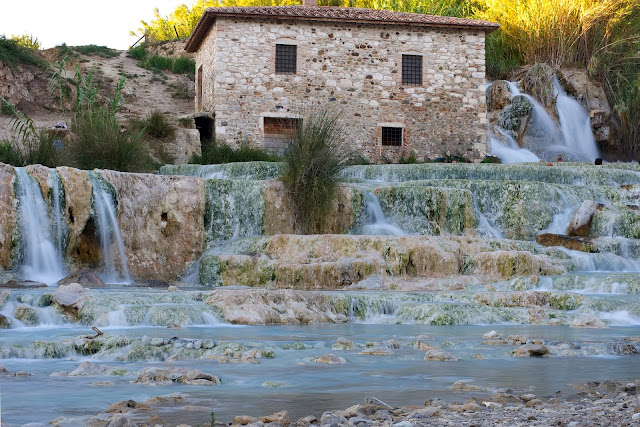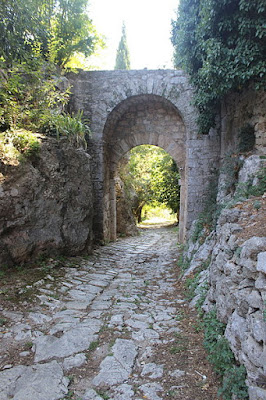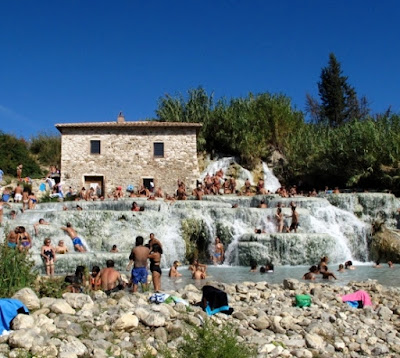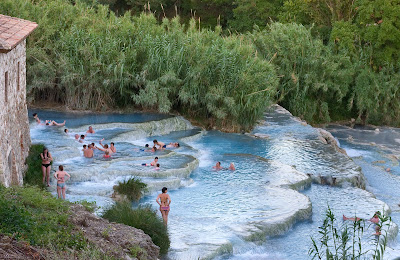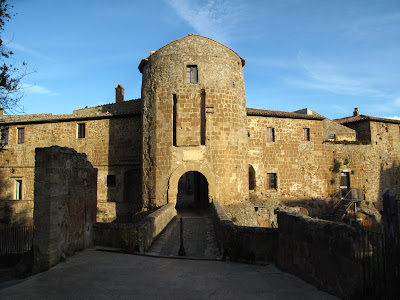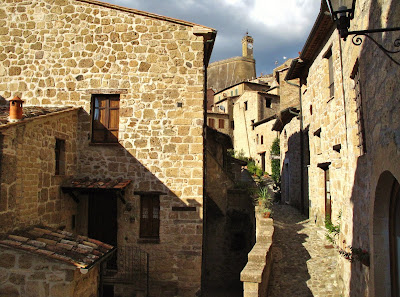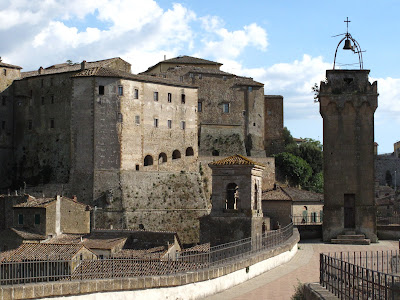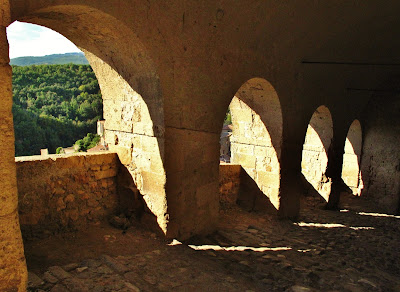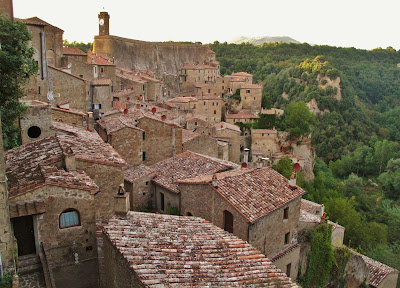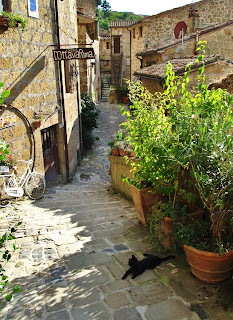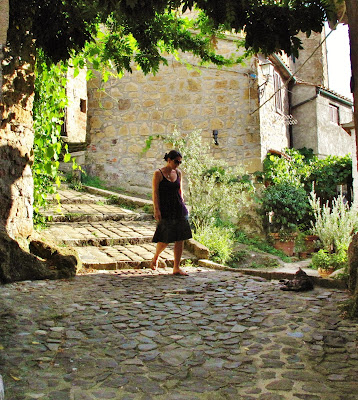The Pantheon. Trevi Fountain. Spanish Steps. Piazza Navona. Campo de Fiori. Iconic monuments of Rome are loved by the world. Come along as I string together these classic "must-see" places in Rome.
 |
| Spanish Steps |
Next on to the Pantheon. I have been to see the Pantheon several times, but never when it has been open to check out the inside. This morning, along with my Roman friend Sara, I decided to take a peek inside this ancient monument. The origin of the Pantheon was a Pagan temple to the Roman Gods (Pan=many + Theos=God) and there were a lot of Gods! When Christianity became the only legal religion, the building was re-purposed as a Christian church, which is how it survived intact to this day. The ceiling is a work of art and engineering, using a Roman invented material: concrete. The oculus in the dome is open to the sky to let in the light (and rain) and reminds us that we are always connected to nature. Victor Emmanuel, the king who unified Italy, is entombed here and the great Renaissance artist Raphael among others.
That's exactly what Sara and I did. Great pizzas, salads
and more stuffed "zucchine" flowers (yum) washed down with a
half-litre of the restaurant's house white wine. Bello!
With the tremendous lunch, we had the energy to
move on to Piazza Navona. What a grand public square! Back in
ancient Roman times, this piazza was a stadium and known as "Circus Agonales" where people used to watch the "agones" or games. When the stadium was decommissioned,
the square was used as a local market, which was then moved to Campo de' Fiori.
If you want to see a movie about Rome and Bernini, watch Angels and Demons adapted from Dan Brown's book-it's pure travel porn.
While Bernini may have been made for Rome, I was
made for gelato. To eat it, that is. Yes, It was time for my daily
gelato, and Frigidarium between Piazza Navona and the
Pantheon is a great place to stop in! The lemon gelato here was
delicious! TIP: the best gelato is not the
mountains of super bright coloured stuff that's filled with artificial
flavour and colour!
Look for subtitle colours of gelato, a soft, spreadable consistency, packed tightly into a metal tin with a lid, and is
scooped out by flat paddles. You can always tell a good gelato
place by looking at the lemon gelato-it should be white instead of
yellow. And really, there is no such thing as "bad" gelato, in
my opinion. So don't worry about it too much. The only way to be a true
connoisseur of gelato is to eat your own weight of it while you are in Italy.
TIP: dinner hour in Italy starts at
about 8:00 and continues to 10:00 or 11:00 at night. That's why it's
handy to have a larger lunch or a small snack at 5:00, so you can make it to the
late dinner time. I conveniently grabbed
some bottles of wine to go from the enoteca, to have on hand for the remainder
of my time in Rome.
Rome at night has a different pace and atmosphere than during the daytime. Check out my blog post: A Night Stroll Through Rome to all the same piazzas, including the famous Trevi Fountain. The evening stroll in Italy before and after dinner is customary and called the passeggiata. There are far fewer tourist crowds at night, so you will be able to get close enough to the fountain to actually toss the customary coin in the waters. Be careful, don't try to wade in the fountain like in La Dolce Vida, or you will get slapped with that same €400 fine for sitting on the Spanish Steps!
What are your favourite piazzas in Rome? Perhaps they are a bit off the beaten path? I would love to hear about them in the comments section below!

